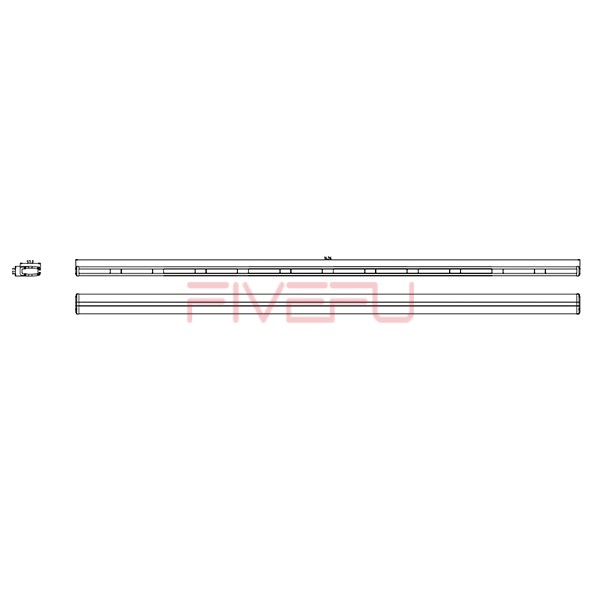Using amber lights without purpose confuses drivers and increases risk. Misuse may cause accidents and penalties. Understanding UK amber-light rules ensures safer, compliant driving.
In the UK, amber lights may only be used for legal signalling purposes—such as indicators, hazard warnings, or approved vehicles performing safety-related tasks. Using amber lights unnecessarily is considered misuse, may breach RVLR regulations, and can create road hazards. Drivers should activate amber lighting only when required for clear communication and safety.
To avoid road confusion and legal penalties, every driver must understand when amber lighting is truly allowed in the UK.
When Are Amber Lights Legally Allowed in the UK?
Amber lights serve as essential safety signals, helping drivers communicate intentions and warn others about potential hazards. In the UK, their use is strictly controlled by the Road Vehicles Lighting Regulations (RVLR). These laws make clear that amber lighting must never be activated for decoration or convenience.
The most common legitimate uses include:
-
Turn indicators, which tell other road users a vehicle is changing direction.
-
Hazard warning lights, activated only when the vehicle is stationary due to an emergency or causing obstruction.
-
Amber beacons, used exclusively by authorised vehicles performing slow-moving, roadside, or safety-related operations.
Road maintenance trucks, recovery vehicles, agricultural machinery, and oversized load escorts may use flashing amber beacons to improve visibility. However, standard private vehicles are not permitted to display amber beacons under any circumstance. UK regulations emphasise that amber lights must always serve a clear, legally defined safety purpose.
What Happens If You Use Amber Lights When You Don’t Need Them?
Improper use of amber lights creates unnecessary confusion. When drivers activate hazard lights without a valid reason, others may misinterpret the situation, potentially braking too hard, changing lanes abruptly, or assuming a vehicle is stopped when it is not.
Legally, misuse can result in warnings or fines. Police have the authority to issue penalties for inappropriate signalling or illegal installation of amber beacons on non-approved vehicles. Even using hazard lights while driving normally—something many drivers casually do—is discouraged and may be considered irresponsible under road-safety guidelines.
Beyond legal issues, amber-light misuse damages overall road communication. If drivers begin using warning signals carelessly, the effectiveness of genuine alerts is weakened. This undermines trust in a system designed to improve road safety for all.
Why Does Amber Light Misuse Create Confusion and Risk?
Amber lighting is universally understood as a signal of caution. When used improperly, it creates “false warnings,” causing other drivers to react unpredictably. For example, sudden hazard-light activation may trigger unnecessary braking or hesitation, especially in heavy traffic or at night.
Overuse can also desensitize drivers. If amber warnings appear frequently without a real hazard, road users may start ignoring them. This becomes dangerous during true emergencies, where quick reactions are critical.
Misuse also reduces driving predictability. UK road safety depends on consistent signalling behaviour. If amber lights are used casually, other drivers cannot accurately judge a vehicle’s intentions—leading to miscalculations, unsafe overtaking, or rear-end collisions.
Overall, clarity in signalling is essential. Misusing amber lights erodes that clarity and increases the likelihood of accidents.
What Types of Vehicles Are Allowed to Use Amber Beacons?
Flashing amber beacons are strictly limited to specific vehicle categories. These include:
-
Road maintenance and highway service vehicles
-
Breakdown and recovery trucks
-
Refuse collection and street-cleaning vehicles
-
Escort vehicles for oversized loads
-
Airport ground-service vehicles
-
Certain agricultural or construction machines operating slowly
-
Emergency utility vehicles performing roadside repairs
These vehicles rely on amber beacons to enhance visibility when working at reduced speed, obstructing traffic, or operating in dangerous environments. Even for them, beacon use is restricted to moments when safety requires it.
Private cars, vans, and general commercial vehicles cannot legally install or use amber beacons unless explicitly authorised. Doing so violates UK lighting regulations.
The Correct Way to Use Amber Lights as a Regular Driver
For everyday motorists, the proper use of amber lights is simple and limited:
-
Indicators: Use when turning or changing lanes.
-
Hazard lights: Use only when stationary and unable to move, or when your vehicle presents a danger.
-
Emergency deceleration warning: Brief activation to warn drivers behind you during sudden heavy braking (accepted practice).
Hazard lights should not be used while driving normally, in rain, or to say “thank you.” These behaviours are discouraged because they distort the real meaning of amber warnings.
By following these rules, drivers support safer, clearer communication on UK roads.
Summary
Amber lights must be used only when legally required—responsible signalling keeps UK roads safer for all drivers.









